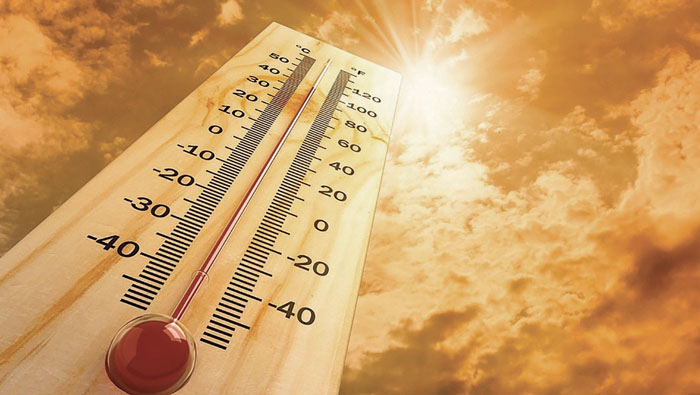Sunaynah station in Al Buraimi Governorate reached a scorching temperature of 47 degrees Celsius on Monday, making it the hottest location in the Sultanate of Oman. According to data from Oman Meteorology, Sunaynah station recorded 47.5 degrees Celsius as the highest temperature in the last 24 hours. This was followed by Hamra Ad Duru station in Al Dhahirah Governorate with 46.5 degrees Celsius and Maqshin station in Dhofar Governorate with 46.2 degrees Celsius. Other stations that recorded high temperatures included Wadi Al Maawil station in South Al Batinah Governorate and Amerat station in Muscat Governorate, both reaching 46.1 degrees Celsius.
In addition to the high temperatures in Sunaynah station, Al Buraimi Governorate also experienced temperatures of 46.0 degrees Celsius at Al Buraimi station. Other areas with high temperatures included Ibri station in Al Dhahirah Governorate with 45.9 degrees Celsius and Rustaq station in South Al Batinah Governorate with 45.6 degrees Celsius. The extreme heat in these locations highlights the continued impact of climate change and the need for measures to mitigate its effects. Oman Meteorology continues to monitor and track temperature fluctuations to provide accurate data for forecasting and planning purposes.
The rising temperatures in Oman are a cause for concern, as they can have serious implications for public health, infrastructure, and the environment. Extreme heat can lead to heat-related illnesses, dehydration, and even death, particularly among vulnerable populations such as the elderly and those with pre-existing medical conditions. In response to the heatwave, authorities in Oman have issued warnings and recommendations to help residents stay safe and cool during the hot weather. These include staying hydrated, avoiding outdoor activities during peak heat hours, and seeking shade or air-conditioned spaces when necessary.
As global temperatures continue to rise due to climate change, extreme heatwaves are becoming more frequent and intense around the world. The Middle East, including Oman, is particularly vulnerable to the impacts of rising temperatures, with heatwaves posing a significant threat to human health, agriculture, and economies. In order to address these challenges, it is essential for countries to take action to reduce greenhouse gas emissions, invest in renewable energy sources, and implement adaptation measures to mitigate the worst effects of climate change. By working together and taking proactive steps, we can protect the planet and ensure a sustainable future for generations to come.
In conclusion, the recent high temperatures recorded in Sunaynah station in Al Buraimi Governorate serve as a stark reminder of the urgent need to address climate change and its impacts. Oman, like many other countries, is experiencing the effects of global warming through extreme heat events and rising temperatures. By raising awareness, implementing mitigation measures, and working towards a greener future, we can help reduce the risks associated with climate change and create a more sustainable world for all. It is crucial for governments, businesses, and individuals to take action now to protect the environment and safeguard the well-being of future generations. The time to act is now.









